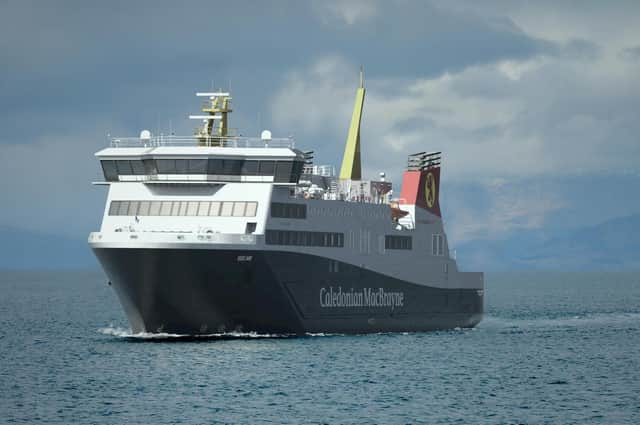CalMac ferries scandal: Besmirching of Ferguson yard is shameful, given Scottish government's mistakes – Kenny MacAskill MP


And while a rush for an announcement heralding what was viewed as a political triumph in 2015 – the contracts ordering two new ferries – lies at the root of what went wrong, there seems little urgency to provide the necessary infrastructure to supply the ships when they finally set sail.
A cursory glance at a timeline for the fiasco shows that contracts were rushed, doubts in CMAL overridden, and the seeds for future conflict between the shipyard and the procuring authority were laid.
Advertisement
Hide AdAdvertisement
Hide AdBut sadly recent correspondence I’ve received from the Scottish government shows that, as 2022 approaches, the travails rest not just with the ships still to be completed but the facilities to fuel them even when they operate.
You’d have thought that with construction being delayed, everything else would at least be good to go. But not so.
After asking the Scottish government how much the infrastructure to supply the liquefied natural gas for these dual-fuel ships would cost and when it would be completed, I received an astonishing answer.
They simply don’t know and won’t be able to say until they’ve completed their investigations into just what infrastructure’s required in the first place.
Now you might have thought that when embarking on building a ship with a fuel system that’s complex in its design and requiring port facilities to be constructed you’d resolve this afore you begin. But apparently not.
This shows that the besmirching of the past management and the current workforce at Ferguson’s was shameful. Blame rests with those that rushed to make a political announcement and whose agencies chose this crazy fuel system – not those having to struggle to work out how to build it, never mind supply it.
Similarly, suggestions that LNG is environmentally friendly are shown to be absurd when the only site for it is and will remain on the Isle of Grain, down on the Thames. Trans-shipping it negates any very limited benefit that might have existed.
What a shambles.
Kenny MacAskill is Alba Party MP for East Lothian
A message from the Editor:
Thank you for reading this article. We're more reliant on your support than ever as the shift in consumer habits brought about by coronavirus impacts our advertisers.
If you haven't already, please consider supporting our trusted, fact-checked journalism by taking out a digital subscription.
Comments
Want to join the conversation? Please or to comment on this article.

